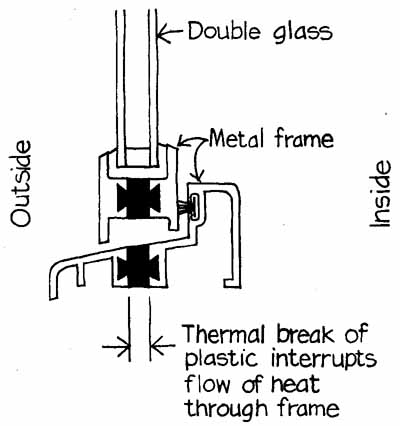Unwanted water can originate inside a building from leaking plumbing or heating systems, splashover from sinks and baths, and condensation on cold surfaces. Leaky pipes can be prevented only by careful installation. Plumbing installations that tend to develop leaks, such as interior roof drains and built-in shower receptors, are provided with underlying metal or plastic sheet membranes to gather stray water and funnel it into the drain pipes. Where splashover is expected, impervious surfaces and , if necessary, floor drains should be installed to keep water out of the fabric of the building. Condensate dripping off water tanks and cold-water piping is a frequent cause of building damage in humid climates. Piping and tanks should be insulated and provided with a vapor retarder.
Condensate running down the interior of window panes results in a decaying or rusting sash. Double glass has an interior surface temperature sufficiently high to avoid condensation under most circumstances. The metal frames of windows and doors some- times accumulate condensate in cold weather. If such frames have hollow internal spaces, condensate may form inside and cause damage unless it's drained continually to the outdoors through drain holes or unless the hollows are completely filled with sealant or mortar to prevent moist air from occupying the space. Condensation on the exposed indoor surfaces of metal frames can usually be avoided by providing a thermal break in the frame section, to enable the indoor surface to be maintained at a temperature above the dew point (ill. 24-12 below).

ill. 24-12:
Thermal Break Window Frame Profile . Thermal break of plastic interrupts flow
of heat through frame. Double glass; metal frame; outside; inside.
Previous: Frost Heaving Next: Fitting Buildings to People